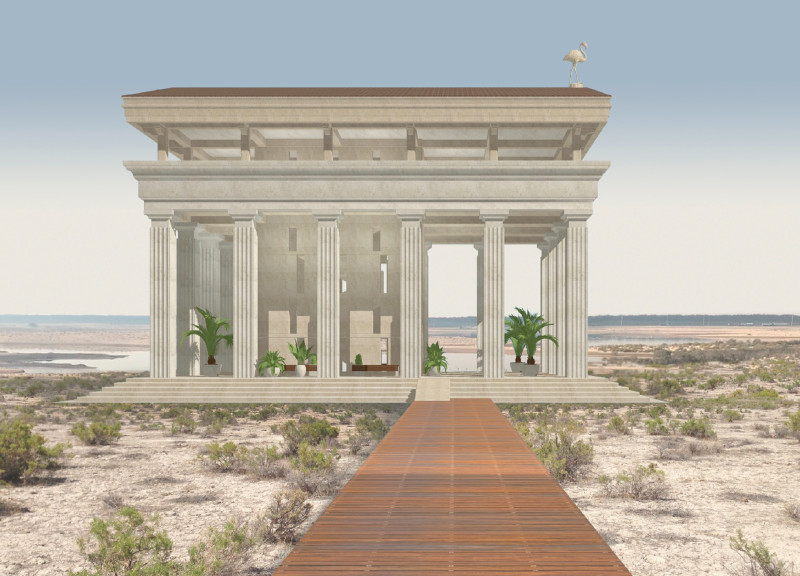5 key facts about this project
At its core, the project represents a blend of modernism and sustainability, with a strong emphasis on creating a harmonious relationship between the built and natural environments. The design integrates a variety of functions, accommodating spaces for residential living, commercial activities, and communal interactions. This multi-faceted approach ensures that the building serves as a vibrant hub, fostering social connections and enhancing the quality of life for its inhabitants.
The architectural design showcases a thoughtful layout that optimizes natural light and ventilation, thereby promoting energy efficiency. Large, strategically placed windows offer panoramic views while allowing natural light to filter in, creating a bright and inviting atmosphere inside. The use of open-plan spaces encourages flexibility in how the area can be utilized, accommodating different activities that evolve over time.
Materiality plays a crucial role in the overall expression of the project. A palette of materials has been thoughtfully chosen to balance durability, sustainability, and aesthetic charm. The exterior features a combination of locally sourced brick and contemporary metal cladding, which not only highlights the building's modern character but also reinforces its contextual relevance. The use of wood accents in the building façade adds warmth and invites a tactile element that resonates with passersby, further bridging the gap between the urban landscape and the natural world.
Particular attention has been given to the landscape surrounding the architecture, enhancing the interaction between inside and outside. Green spaces are interspersed throughout the design, including rooftop gardens and courtyard areas that encourage biodiversity and provide residents with tranquil outdoor settings. This integration of landscape architecture not only enhances the visual landscape of the building but also contributes to the sustainability goals by promoting ecological balance.
A unique feature of the project is its innovative approach to community engagement. By incorporating spaces for public art installations and venues for local events, the architecture extends beyond its physical boundaries, inviting the community to partake in its narrative. This aspect emphasizes the building’s role as a facilitator of cultural dialogue and social interaction, reinforcing the idea that architecture serves to connect people, ideas, and experiences.
In terms of design outcomes, the project successfully addresses several contemporary trends in architecture. The emphasis on sustainability is paramount, highlighted by the incorporation of energy-efficient systems and a focus on natural materials. Furthermore, the design aligns with the principles of biophilic design, which seeks to create a connection between people and nature, enhancing well-being and productivity.
The project stands out for its unique integration of various elements that come together to create a cohesive and functional architectural statement. The consideration of context, community, and sustainable practices showcases a forward-thinking approach that is both responsible and visionary. For those interested in delving deeper into the architectural nuances, a review of the architectural plans, architectural sections, architectural designs, and architectural ideas within the project presentation will provide further insights into its innovative characteristics and design philosophy. Engaging with these elements offers a chance to appreciate the thoughtful details that underscore this architectural endeavor.


























